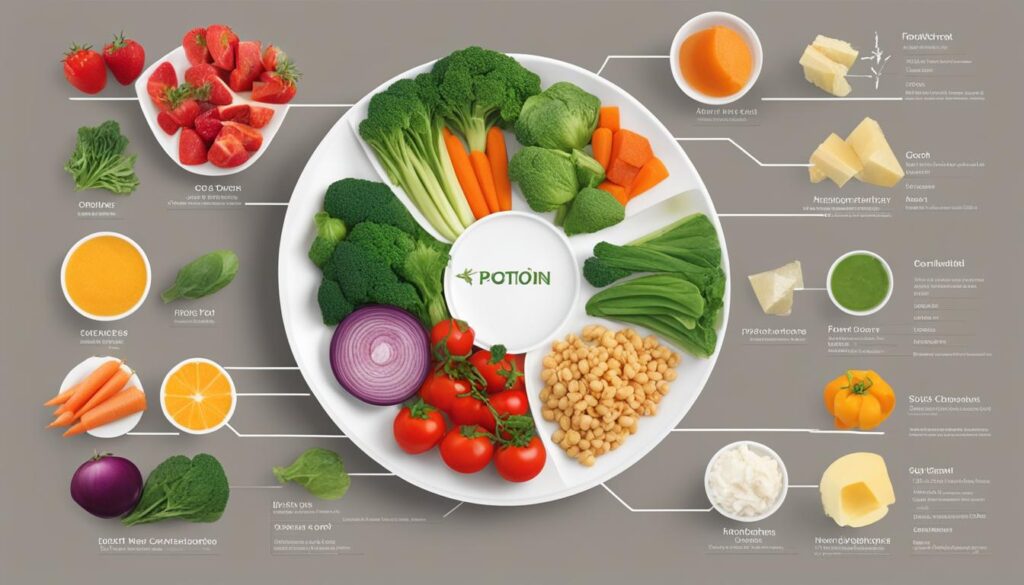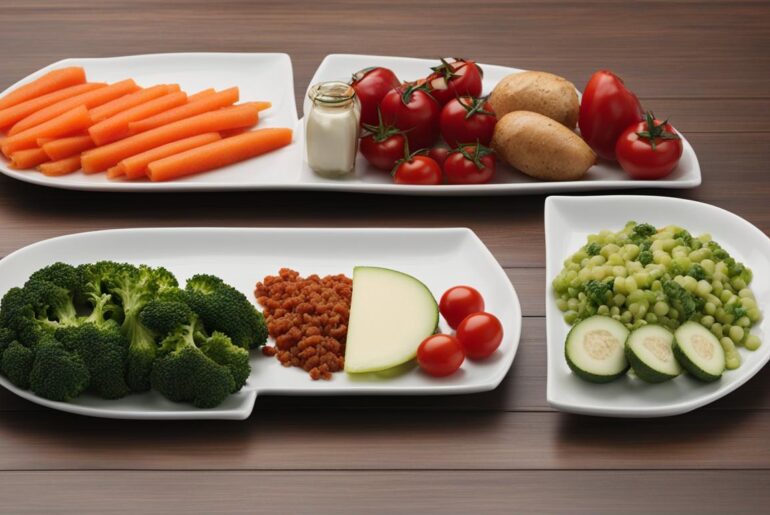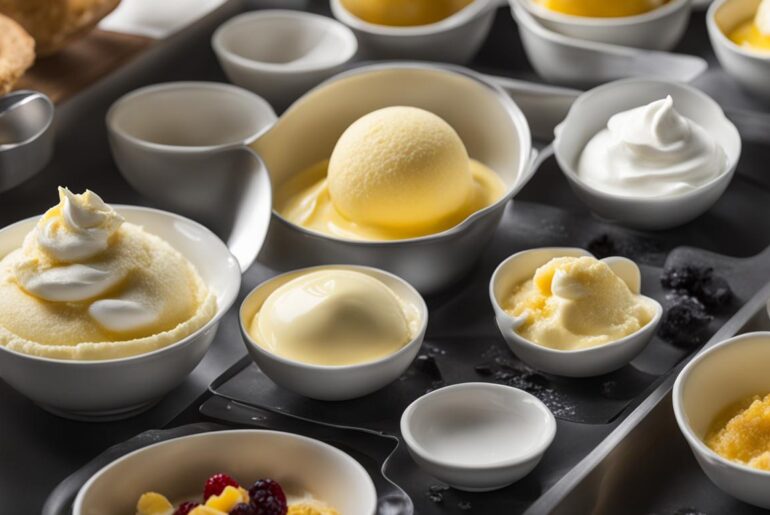As obesity continues to be a growing epidemic, it’s important to address the factors that contribute to overeating and unwanted weight gain. One significant factor is the increase in portion sizes, which often leads to consuming more food than necessary. Controlling portion sizes is key to maintaining a healthy weight and promoting overall well-being.
Portion control plates are a valuable tool for effectively managing portion sizes and fostering healthy eating habits (check out my post on healthy eating habits here). By using these specially designed plates, you can take control of your meals and make informed choices about the quantity of food you consume.
Key Takeaways
- Using portion control plates effectively can support weight management (check out my post on portion control plates here).
- Portion control plates help in controlling portion sizes and preventing overeating.
- Smaller dinnerware can create an illusion of larger portions, leading to satisfaction with smaller amounts.
- Your plate can serve as a guide for portion control, helping you achieve a balanced meal.
- Your hands can provide a practical reference for portion sizes across different food groups.
Use Smaller Dinnerware for Effective Portion Control
Evidence suggests that the size of plates, spoons, and glasses can unconsciously influence how much food someone eats [2, 3, 4].
Using smaller dinnerware, such as plates and bowls, can make food appear larger, leading to a perception of satisfaction with smaller portions. By tricking the mind into thinking there’s more food on the plate, you can feel fulfilled and prevent the urge to overeat [5].
Swapping your usual dinnerware for smaller alternatives can be an easy and effective way to control your portions and manage your calorie intake. With smaller plates, you naturally serve yourself less food, reducing the risk of overeating and helping you maintain a healthy weight [7].
Table: Comparison of Portion Sizes Using Large Plates vs. Smaller Dinnerware
| Item | Large Plate (12 inches) | Small Plate (9 inches) |
|---|---|---|
| Main Course | 1.5 cups | 1 cup |
| Starch (e.g., rice, pasta) | 1 cup | ¾ cup |
| Vegetables | 1 cup | ½ cup |
| Salad | 1.5 cups | 1 cup |
Use Your Plate as a Portion Guide

Your plate can serve as a guide for portion control, helping you determine the optimal macronutrient ratio for a well-balanced meal. By visually dividing your plate into sections, you can create a balanced and satisfying meal that supports your health and weight management goals.
A rough guide for each meal is to fill half of the plate with vegetables or salad, one-quarter with high-quality protein, and one-quarter with complex carbohydrates. This macronutrient distribution ensures that you get a good mix of nutrients, including fiber, vitamins, minerals, and essential amino acids.
Using your plate as a portion control guide allows you to visualize the right amount of food to include in each category (check out my post on portion control guide here). It also helps you avoid overeating and maintain a balanced diet.
Dividing Your Plate
Using a portion control plate can further simplify the process of dividing your plate into sections based on different food groups. These plates typically have sections marked for vegetables, protein, grains, and sometimes healthy fats. They serve as a visual reminder to include the right amount of each category for a well-balanced meal.
| Food Group | Portion Size |
|---|---|
| Vegetables or Salad | Fill half of the plate |
| High-Quality Protein | One-quarter of the plate |
| Complex Carbohydrates | One-quarter of the plate |
| High-Fat Foods | Limit to half a tablespoon |
Using a portion control plate not only simplifies portion control but also helps you create visually appealing and balanced meals. It ensures that you have a variety of nutrients on your plate and helps prevent overeating by providing clear guidelines for portion sizes.
Use Your Hands as a Serving Guide
Your hands can be a helpful guide for portion sizes, as different food groups correspond to various shapes and parts of your hands (15). By using your hands as a serving guide, you can easily estimate appropriate portion sizes for different types of foods.
Here’s a breakdown of how your hands can guide your portion sizes for each food group:
- High-Protein Foods:
For women, a palm-sized serving is recommended, while men can have two palm-sized portions. This can include lean meats, poultry, fish, tofu, or tempeh.
- Vegetables and Salad:
For women, a fist-sized portion is ideal, while men can have two fist-sized portions. Fill your plate with a colorful variety of vegetables and leafy greens.
- High-Carb Foods:
For women, a cupped-hand portion is recommended, while men can have two cupped-hand portions. This can include whole grains, potatoes, sweet potatoes, or legumes.
- High-Fat Foods:
For women, a thumb-sized portion is sufficient, while men can have two thumb-sized portions. Choose healthy fats like avocados, nuts, seeds, or olive oil in moderation.
Using your hands as a serving guide allows for a simple and practical way to control portion sizes without the need for measuring cups or scales. It can help you maintain a balanced intake of different food groups and ensure you’re getting the right amount of nutrients from your meals.
| Food Group | Women | Men |
|---|---|---|
| High-Protein Foods | Palm-sized portion | Two palm-sized portions |
| Vegetables and Salad | Fist-sized portion | Two fist-sized portions |
| High-Carb Foods | Cupped-hand portion | Two cupped-hand portions |
| High-Fat Foods | Thumb-sized portion | Two thumb-sized portions |
“Using your hands as a serving guide allows for a simple and practical way to control portion sizes without the need for measuring cups or scales.”
Conclusion
Using portion control plates effectively is a fantastic strategy for managing portion sizes and promoting healthy eating habits (check this post out). By incorporating smaller dinnerware, utilizing your plate and hands as portion guides, and practicing mindful eating, you can maximize the benefits of portion control plates for weight management and overall health (see my post here).
Consistency and practice are key in making portion control a sustainable lifestyle habit. Remember to incorporate all food groups, plan your meals in advance, drink water before meals, and be mindful of suitable serving sizes to maintain portion control.
By adopting these portion control tips and harnessing the power of portion control plates, you can take control of your eating habits, support your weight management efforts, and embrace a more mindful approach to food (check out my post on portion control tips here). Start your journey to a healthier lifestyle today!




